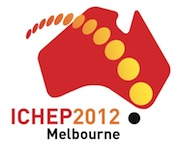Speaker
Dr
Xavier Prudent
(Technische Universität Dresden)
Description
We perform global fits to the parameters of the Constrained Minimal Supersymmetric Standard Model (CMSSM) and to a variant with non-universal Higgs masses (NUHM1). In addition to constraints from low-energy precision observables and the cosmological dark matter density, we take into account the LHC exclusions from searches in jets plus missing transverse energy signatures with about 5\,fb$^{-1}$ of integrated luminosity. We also include the most recent upper bound on the branching ratio $B_s\to\mu\mu$ from LHCb. Furthermore, constraints from and implications for direct and indirect dark matter searches are discussed. The best fit of the CMSSM prefers a light Higgs boson just above the experimentally excluded mass. We find that the description of the low-energy observables, $(g-2)_{\mu}$ in particular, and the non-observation of SUSY at the LHC become more and more incompatible within the CMSSM. A potential SM-like Higgs boson with mass around 126 GeV can barely be accommodated. Values for ${\cal B}(B_s\to\mu\mu)$ just around the Standard Model prediction are naturally expected in the best fit region. The most-preferred region is not yet affected by limits on direct WIMP searches, but the next generation of experiments will probe this region. Finally, we discuss implications from fine-tuning for the best fit regions.
Authors
Bjorn Sarrazin
(Deutsches Elektronen-Synchrotron (DE))
Carsten Hensel
(Georg-August-Universitaet Goettingen (DE))
Prof.
Herbert Dreiner
(University of Bonn)
Klaus Desch
(Universitaet Bonn (DE))
Mathias Uhlenbrock
(Universitaet Bonn (DE))
Matthias Hamer
(Georg-August-Universitaet Goettingen (DE))
Michael Kramer
(Institut f. Theoretische Physik (E)-Rheinisch-Westfaelische Tec)
Nelly Nguyen
(University of Hamburg)
Peter Wienemann
(University of Bonn)
Philip Bechtle
(Deutsches Elektronen-Synchrotron (DE))
Torsten Bringmann
(Hamburg University)
Werner Porod
(Uni. Würzburg)
Dr
Xavier Prudent
(Technische Universität Dresden)
